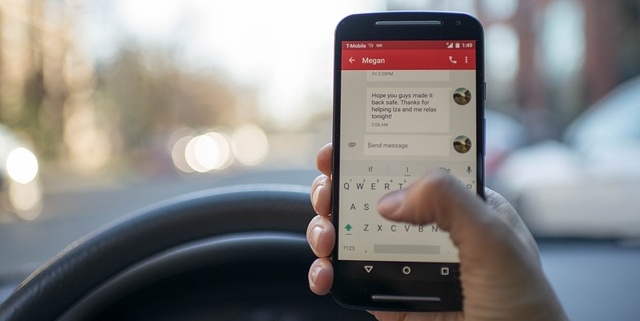Distracted Driving Kills: What You Must Know to Stay Safe
Distracted driving is one of the leading causes of accidents on the road today. While many associate it primarily with texting or phone use, distractions come in many forms, including eating, adjusting controls, and even talking to passengers.
In 2022, distracted driving was responsible for over 3,300 fatalities and nearly 290,000 injuries in the U.S., while in Canada, it contributed to more than 22% of fatal crashes and 25% of serious injury collisions. These alarming statistics highlight the growing dangers of driver inattention.
According to the National Highway Traffic Safety Administration (NHTSA) and Transport Canada, even a brief moment of inattention can result in a life-altering accident.
To help you stay safe, this guide explores the different types of distractions, the risks involved, and the best ways to prevent them. As a trusted vehicle history provider, we are committed to promoting road safety by helping drivers make informed decisions. This guide aligns with our mission of accident prevention by providing insights into distracted driving while emphasizing the importance of a comprehensive vehicle history in identifying past incidents and ensuring a safer driving experience.
What is Distracted Driving?
Distracted driving is any activity that diverts your attention away from driving. This includes anything that takes your eyes off the road (visual distractions), your hands off the wheel (manual distractions), or your mind off driving (cognitive distractions). Many accidents occur because drivers underestimate how dangerous these distractions can be.
Statistics Show the Dangers of Distracted Driving
- Texting while driving increases crash risk by 23 times compared to driving without distractions.
- Taking your eyes off the road for just 5 seconds at 90 km/h is like driving the length of a football field blindfolded.
- Distracted driving contributes to 80% of collisions in North America.
- About 21% of fatal crashes in Canada involve driver distraction.
Three Main Types of Distractions
- Visual distractions – Looking at a GPS device, checking your phone, or observing events outside the vehicle.
- Manual distractions – Eating, adjusting the radio, or reaching for objects inside the car.
- Cognitive distractions – Thinking about something unrelated to driving, engaging in deep conversations, or driving while emotionally distracted.
Common Causes of Distracted Driving
1. Smartphone Use (Texting, Calling, Social Media)
Checking notifications while driving is extremely dangerous. Even hands-free calling can divert your mental focus.
Solution: Use “Do Not Disturb While Driving” mode or place your phone out of reach.
2. Eating and Drinking While Driving
Holding a cup of coffee or unwrapping food means at least one hand isn’t on the wheel.
Solution: Eat before your trip or pull over if you must grab a bite.
3. Adjusting In-Car Technology
Modern cars come with infotainment systems, touchscreens, and voice controls, but using them while driving is risky.
Solution: Set up GPS, radio stations, and climate controls before starting your trip.
4. Talking to Passengers
Conversations can be distracting, especially with children or chatty passengers.
Solution: Politely remind passengers to minimize distractions and keep conversations light.
5. Personal Grooming
Some drivers apply makeup, fix their hair, or even shave while in traffic.
Solution: Take a few extra minutes at home before heading out.
6. Looking at Billboards or Other Vehicles
Flashy advertisements or roadside activities can pull your attention away.
Solution: Keep your focus on the road and use peripheral vision for awareness.
7. Pets in the Car
Unsecured pets can climb onto your lap or move around unexpectedly.
Solution: Use a pet carrier or safety harness to keep them secure in the backseat.
8. Fatigue and Daydreaming
Long drives, lack of sleep, or deep thoughts can take your focus off the road.
Solution: Take breaks on long trips and avoid driving when tired.
Legal Consequences of Distracted Driving
Many jurisdictions have implemented strict laws to curb distracted driving. In several Canadian provinces and U.S. states, using a handheld device while driving can result in serious penalties. If you’re purchasing a used vehicle, running a vehicle accident report can reveal past infractions or accidents related to distracted driving.
- Fines up to $1,000 in some areas.
- Demerit points that affect your driving record.
- License suspension for repeat offenses.
- Higher insurance premiums due to violations.
The Bottom Line: Stay Focused, Stay Safe
Distracted driving is a preventable but serious issue that affects thousands of lives each year. Whether it’s texting, eating, or adjusting your GPS, every distraction increases the risk of an accident.
By making simple changes—like putting your phone away, securing loose items, and keeping your attention on the road—you can drastically reduce the likelihood of a crash.
Safe driving is not just about protecting yourself—it’s about ensuring the safety of everyone on the road. The next time you get behind the wheel, make a commitment to stay focused, avoid distractions, and drive responsibly.


